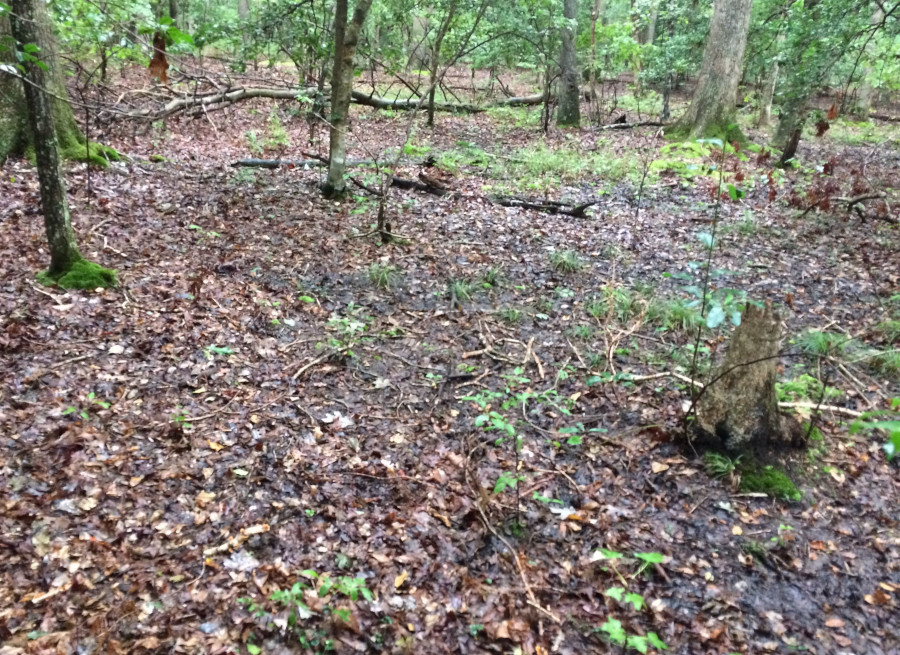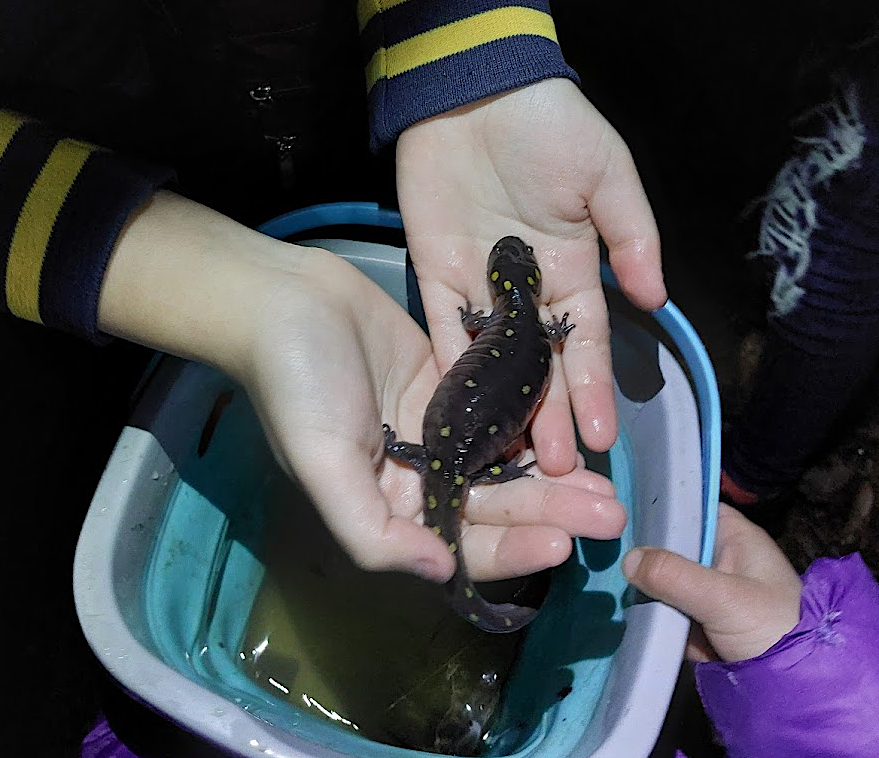
dried-up vernal pool in Fredericksburg & Spotsylvania National Military Park (September, 2018)

dried-up vernal pool in Fredericksburg & Spotsylvania National Military Park (September, 2018)
Vernal pools are freshwater wetlands with three key characteristics:
- they are "isolated wetlands," not connected by a perennial stream to a river or lake
- they dry up during the summer
- they have no fish population
Vernal pools are isolated wetlands. In times of heavy precipitation, an ephemeral or intermitted stream may link a vernal pool to a perennial stream. Those links are not permanent, and fish do not migrate into vernal pools.
As a result, species that lack defenses against fish predation can thrive in the special habitat. In Virginia, eight obligate species rely upon vernal pools as their prime habitat. Fairy shrimp, wood frogs, and six species of salamanders are fond only in and around vernal pools.
The Spotted Salamander, Marbled Salamander, Jefferson Salamander, Mole Salamander, Mabee's Salamander, and Tiger Salamander and go through their larval state when there is water in vernal pools. By the time the pools dry up, adults migrate into the nearby woodlands.1

a spotted salamander (Ambystoma maculatum) ready to lay eggs in a vernal pool at Bull Run Mountains Natural Area Preserve in February, 2023
Salamander breeding often fails. Rainfall may be inadequate in some years to recharge the groundwater, raise the water table, and form the temporary wetland. A pool may dry up before the larvae metamorphose into adults. Marbled Salamanders breed in the fall, and during especially cold winters the entire pool may freeze and kill all the larvae.2